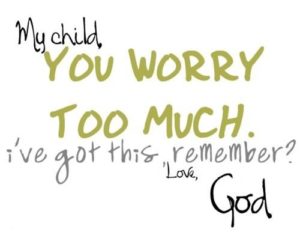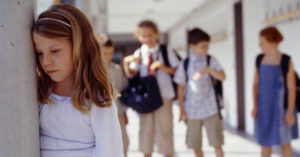
As Ben and I have learned the secret that drives our sweet 2 year olds behavior, we have taken a proactive look into how we can best help her cope. Diagnosed with severe anxiety disorder just 3 short weeks ago, we have been on a whirlwind of emotions. Once the initial shock of it all had disapated a bit, I could truly focus on the issues at hand…What is severe anxiety disorder in children? How do we best help Delise overcome her anxiety? What might her anxiety look like at different stages of her life? How did this happen? With all of these questions, I turned to the professionals and sought out answers.

Anxiety is actually classified as a behavioral disorder that is often co-occurring with other conditions. It is one of the most common behavioral disorders in children and is on the rise as more demands for academic and recreational excellence are placed on our kids. There are many different anxiety disorders including: separation anxiety disorder, social phobia, generalized anxiety disorder, obsessive-compulsive disorder and posttraumatic stress disorder. Anxiety can also include phobias and irrational fears of future events, objects or situations. Delise suffers from obsessive-compulsive disorder which brings on her anxiety. I feel she struggles with feeling out of control so she emphasizes her feelings into compulsive actions.
Characteristics:
An anxiety disorder is characterized by a chronic fear, nervousness, shyness, and avoidance of people or situations that interfere with how a child may function. No amount of reassurance or comforting measures can help to alleviate the child’s anxiety. Some common signs of an anxiety disorder are:
GAD – excessive worry, fatigue or inability to sleep, difficulty concentrating and irritability.
OCD – obsessions and/or compulsions, constant worry about germs, excessive concern about order, washing and rewashing hands and arranging and rearranging items in a certain order or way.
PTSD – appear nervous or jumpy, difficulty sleeping and withdrawn from friends and family.
Separation Anxiety – feelings of homesickness, crying, refusal to go to school and worry for parents while away.
Social Anxiety – fear of performance, shyness and isolation in social situations.
Causes:
There may be multiple causes for an anxiety disorder. They may range from genetics, parenting, stress, an individuals personality and traumatic events.
Impacts:
Children with an anxiety disorder may struggle academically and/or socially in school. They may need extra support in building confidence and positive peer relationships. These learners can often be the quiet, unassuming children in class and it is important to recognize their unique needs. If the symptoms of anxiety are not addressed they may lead to or be complicated by other conditions.

TEACHING TIPS FOR TEACHERS:
- Provide a way to release anxiety. This will vary from child to child but could include listening to calming sounds or taking a body break
- Validate the child’s feelings, take their concerns seriously
- Give the child a place where it is safe to fail, provide a quiet spot away from peers to manage their anxiety
- Be organized, give the child a visual schedule at their desk, break the school day into sections that the child can visualize and manage
- Give the child more time to process information, the situation and the demands that may be asked of them
- Remain calm and relaxed, provide a comforting presence
- Be consistent and have a predictable classroom routine
- Teach and model coping techniques, deep breathing for example (smell the flower, blow out the candle)
- Use a Universal Design for Learning (UDL) approach that allows the student some freedom in choosing their task or assignment
- Try not to put the child “on the spot” or call attention to their anxiety
- Allow the child to have an item or toy that provides comfort at school

Our Family’s Actions:
Since Delise isn’t in school yet and won’t be for quite some time, we choose to focus on the now and how we can best prepare her for when school does become an issue (if we choose not to homeschool that is). Our family has a strong faith in our God almighty. He saves and provides miracles continuously. So for now, I will continue to research anxiety and how to cope as a family and how to help Delise the best to our ability but first and foremost, we will pray, dive into our Bibles as a family and ask God to take this from her or use it to bring glory to His kindgom.
Websites and resources:
Understanding Symptoms of Anxiety in Children
Program from the Psychology Foundation of Canada
Anxiety and Depression Association of America


0 Comments